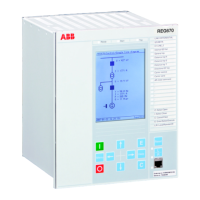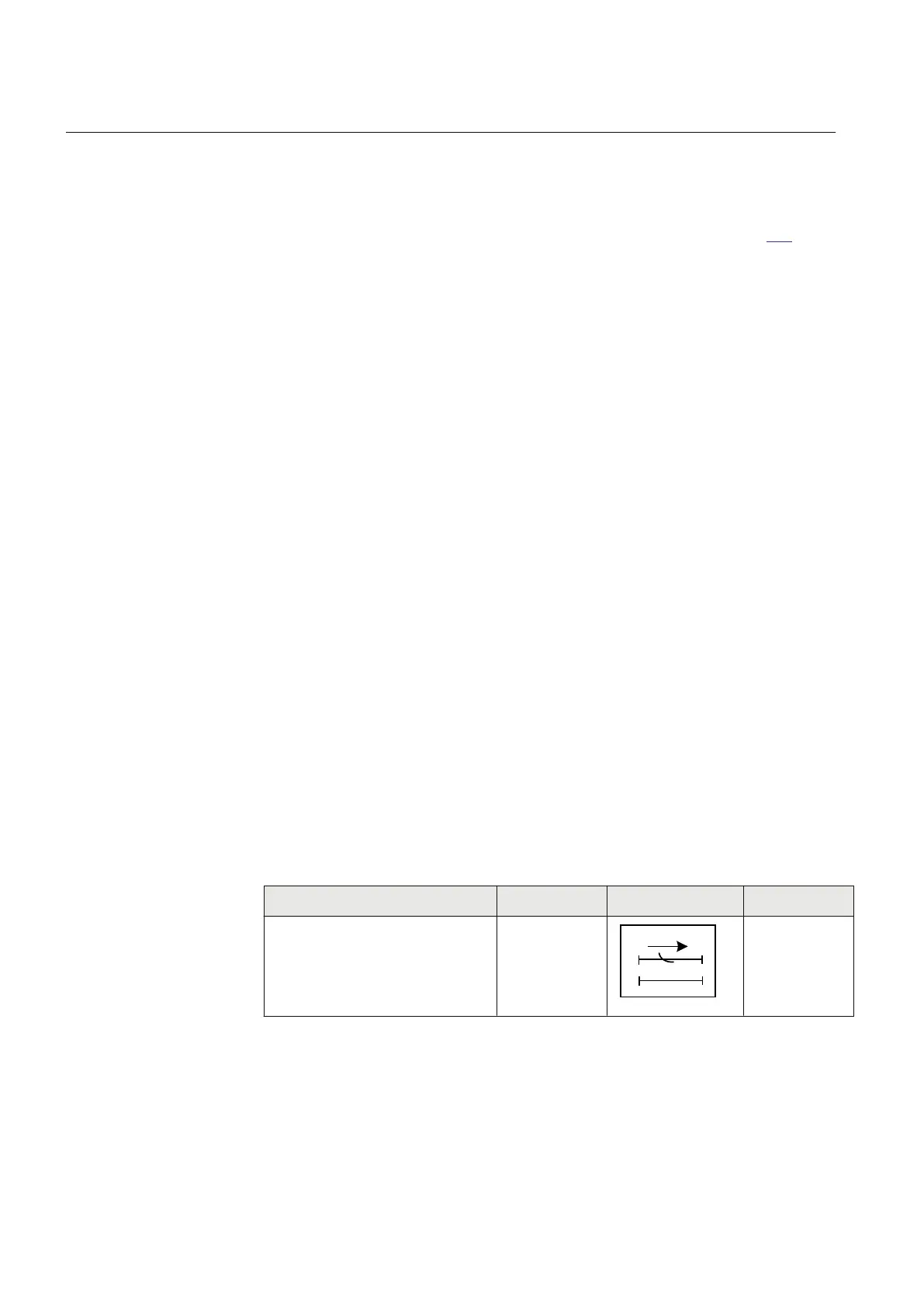The fault is located at the borderline between instantaneous and delayed operation of
the line protection, such as Distance protection or line residual overcurrent protection.
This calculation gives the current fed to the protection: 3I
0fault2
The setting of step 1 can be chosen within the interval shown in equation 193.
0fault 2 step1 0fault1
3I lowmar I 3I highmar× < < ×
EQUATION1455 V2 EN (Equation 193)
Where:
lowmar is a margin to assure selectivity (typical 1.2) and
highmar is a margin to assure fast fault clearance of busbar fault (typical 1.2).
Setting of step 2
The setting of the sensitive step 2 is dependent of the chosen time delay. Often a
relatively long definite time delay or inverse time delay is chosen. The current setting
can be chosen very low. As it is required to detect earth faults in the transformer
winding, close to the neutral point, values down to the minimum setting possibilities
can be chosen. However, one must consider zero-sequence currents that can occur
during normal operation of the power system. Such currents can be due to un-
transposed lines.
In case to protection of transformer windings not feeding residual current at external
earth faults, a fast low current step can be acceptable.
9.5 Four step directional negative phase sequence
overcurrent protection NS4PTOC
9.5.1 Identification
Function description
IEC 61850
identification
IEC 60617 identification ANSI/IEEE C37.2
device number
Four step negative sequence
overcurrent protection
NS4PTOC
IEC10000053 V1 EN
46I2
9.5.2 Application
Four step negative sequence overcurrent protection NS4PTOC is used in several
applications in the power system. Some applications are:
Section 9 1MRK 502 071-UEN -
Current protection
350 Generator protection REG670 2.2 IEC and Injection equipment REX060, REX061, REX062
Application manual

